This lovely Thyme forms a dense mat of dark green, semi-evergreen leaves. Excellent for use in between steppers or as a lawn alternative. Once established it is drought tolerant. In early summer it is smothered with magenta-red flowers.
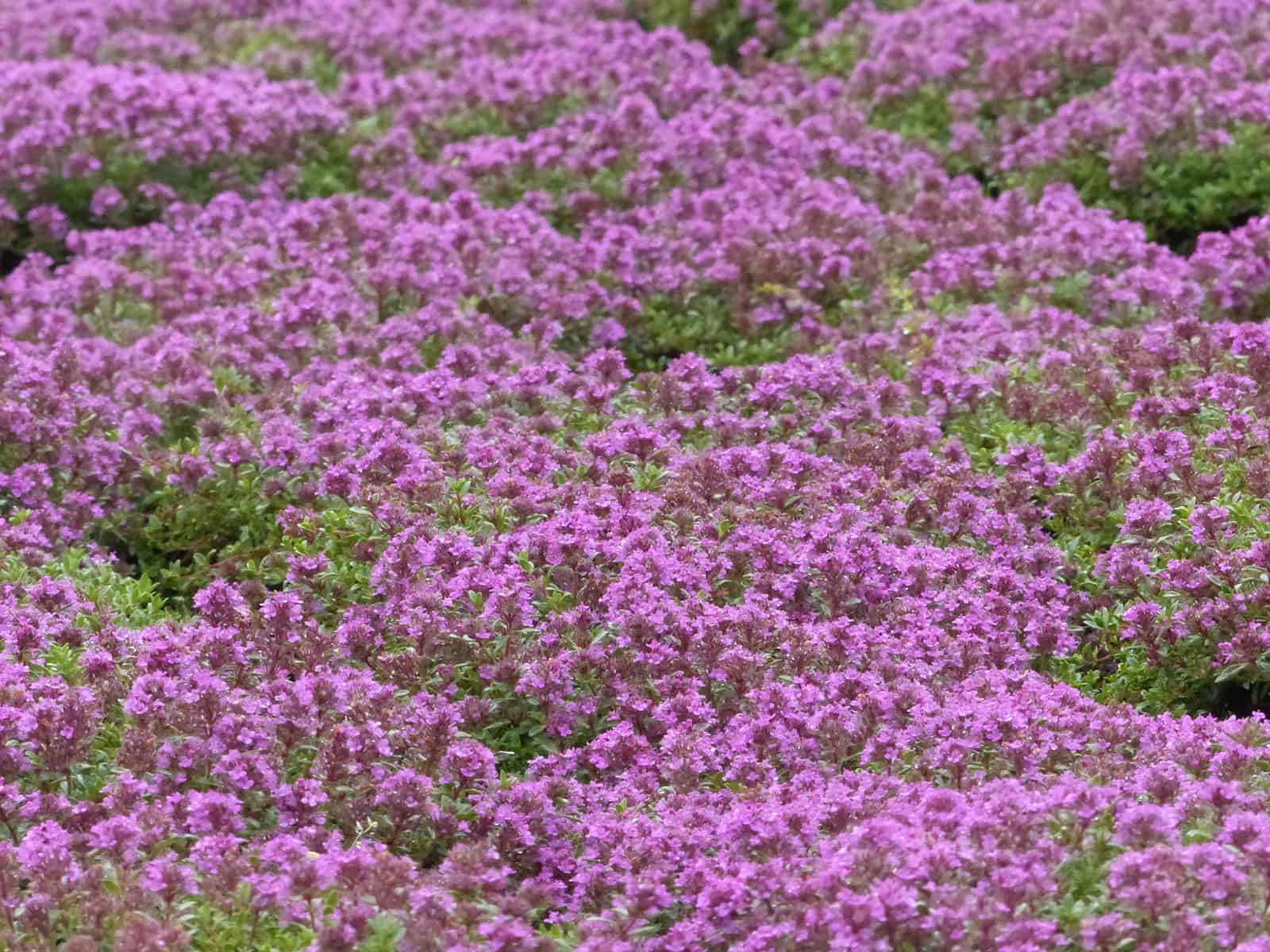
This lovely Thyme forms a dense mat of dark green, semi-evergreen leaves. Excellent for use in between steppers or as a lawn alternative. Once established it is drought tolerant. In early summer it is smothered with magenta-red flowers.
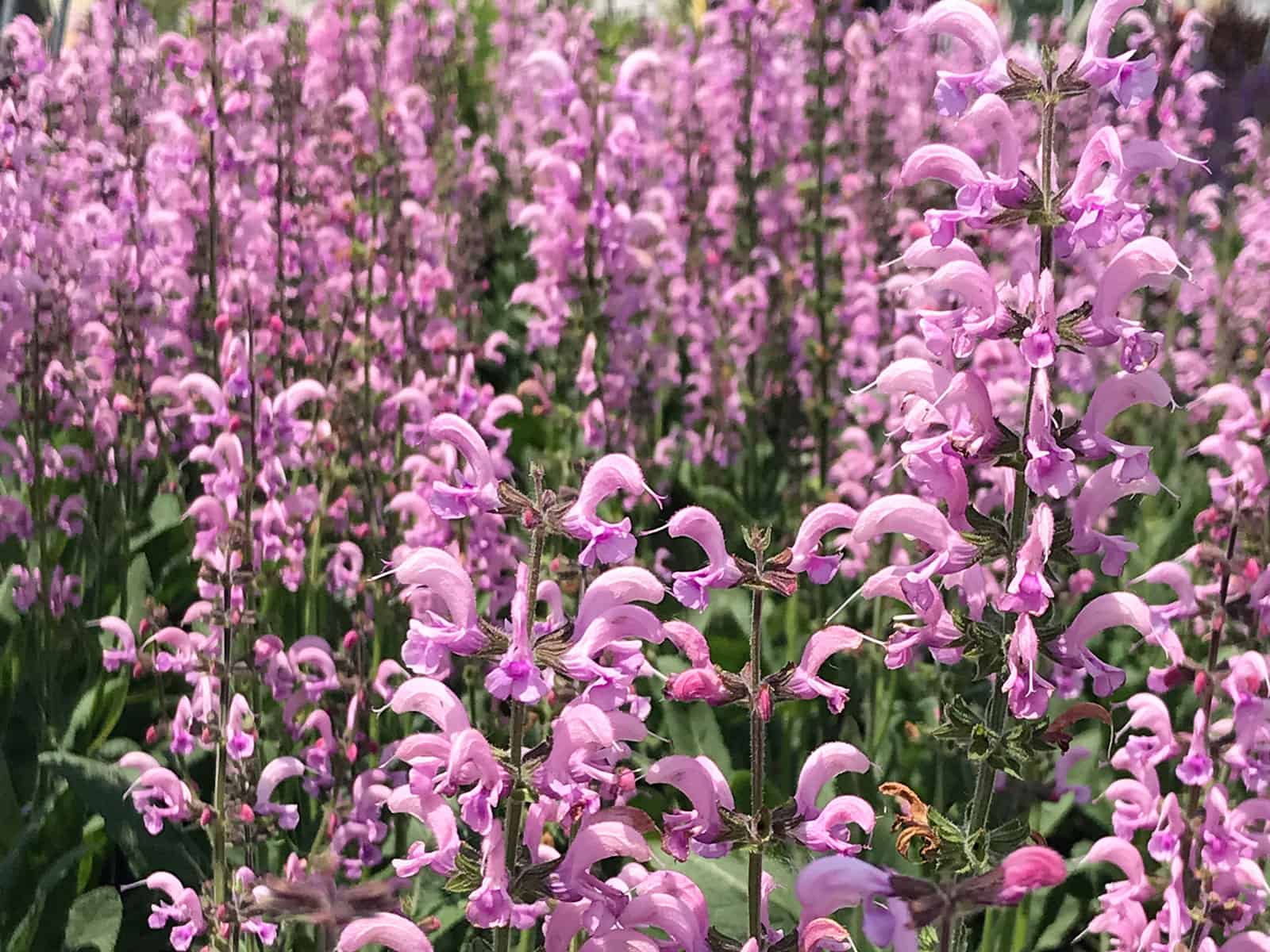
This beautiful pink sage was selected by plantsman Piet Oudolf, from his own garden. These lavender pink spiky flowers are invaluable in the summer garden. They are drought tolerant once established and attract butterflies and hummingbirds!
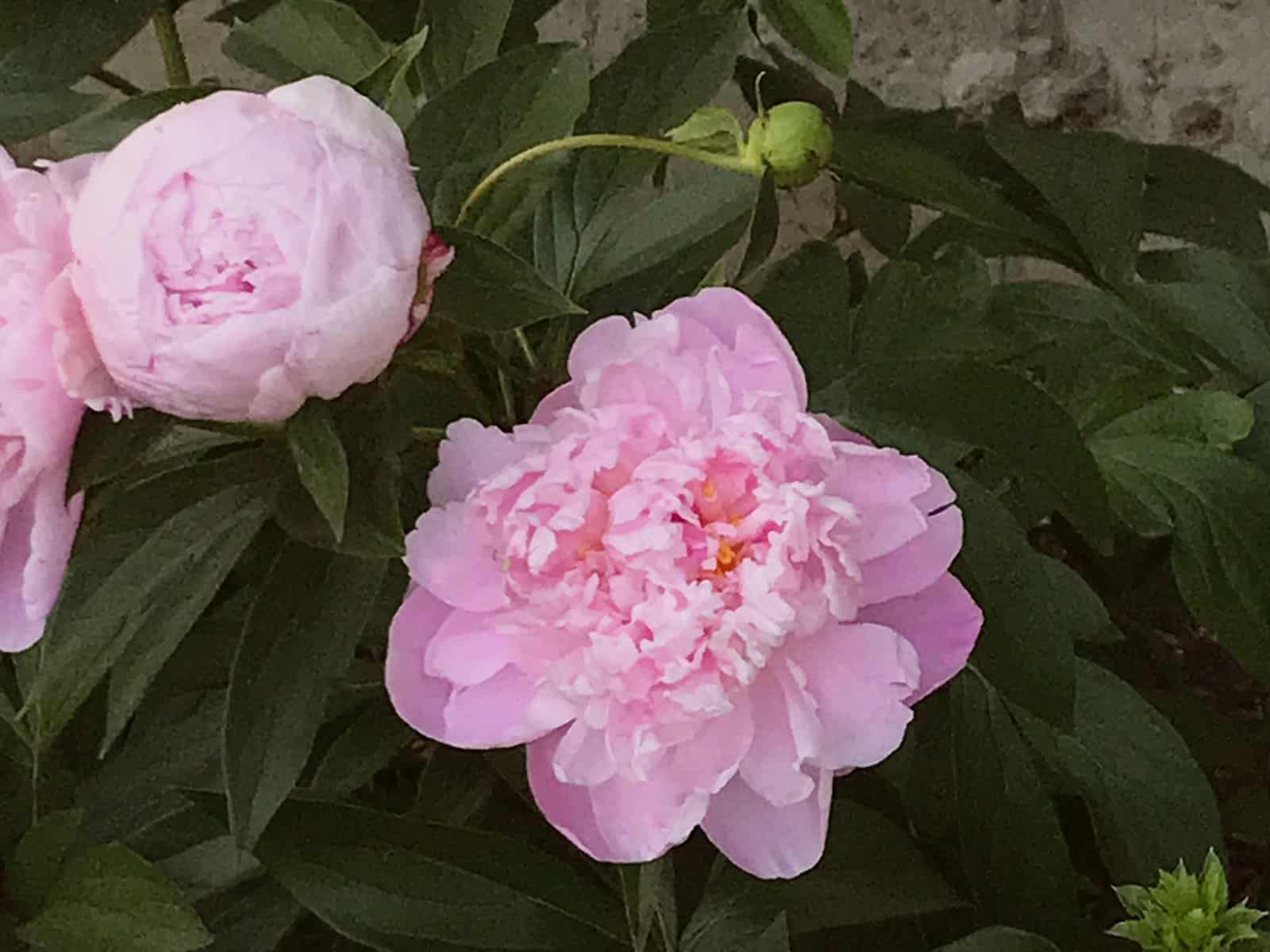
There are hundreds of different varieties of peonies. We selected ‘Sarah Bernhardt’ because many of our clients ask for a pink selection. These bring a lovely sweet scent to the garden when in bloom and make excellent cut flowers. It’s a long time favorite (since 1906) and dependable year after year.
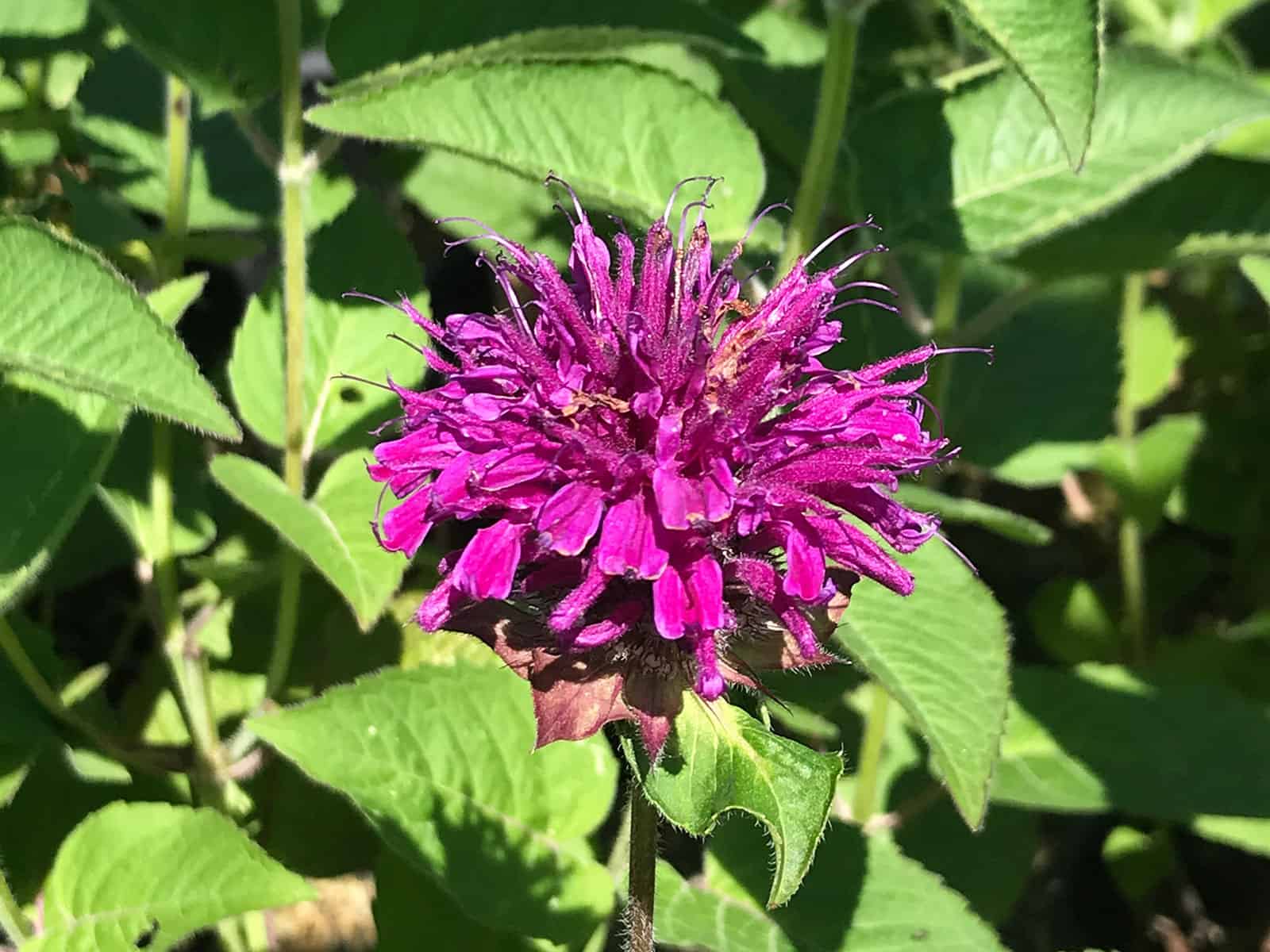
Monarda ‘Purple Rooster’ is one of the darkest and truest purple flowers around! Its upright, rigid stems create a strongly vertical aesthetic while the dull green leaves have a rough, sand-papery texture. Purple Rooster is very much so mildew resistant, which is a big plus when it comes to Beebalms! This cultivar was selected by The Flower Factory in Stoughton, Wisconsin and named by the owners David and Nancy Nedveck.
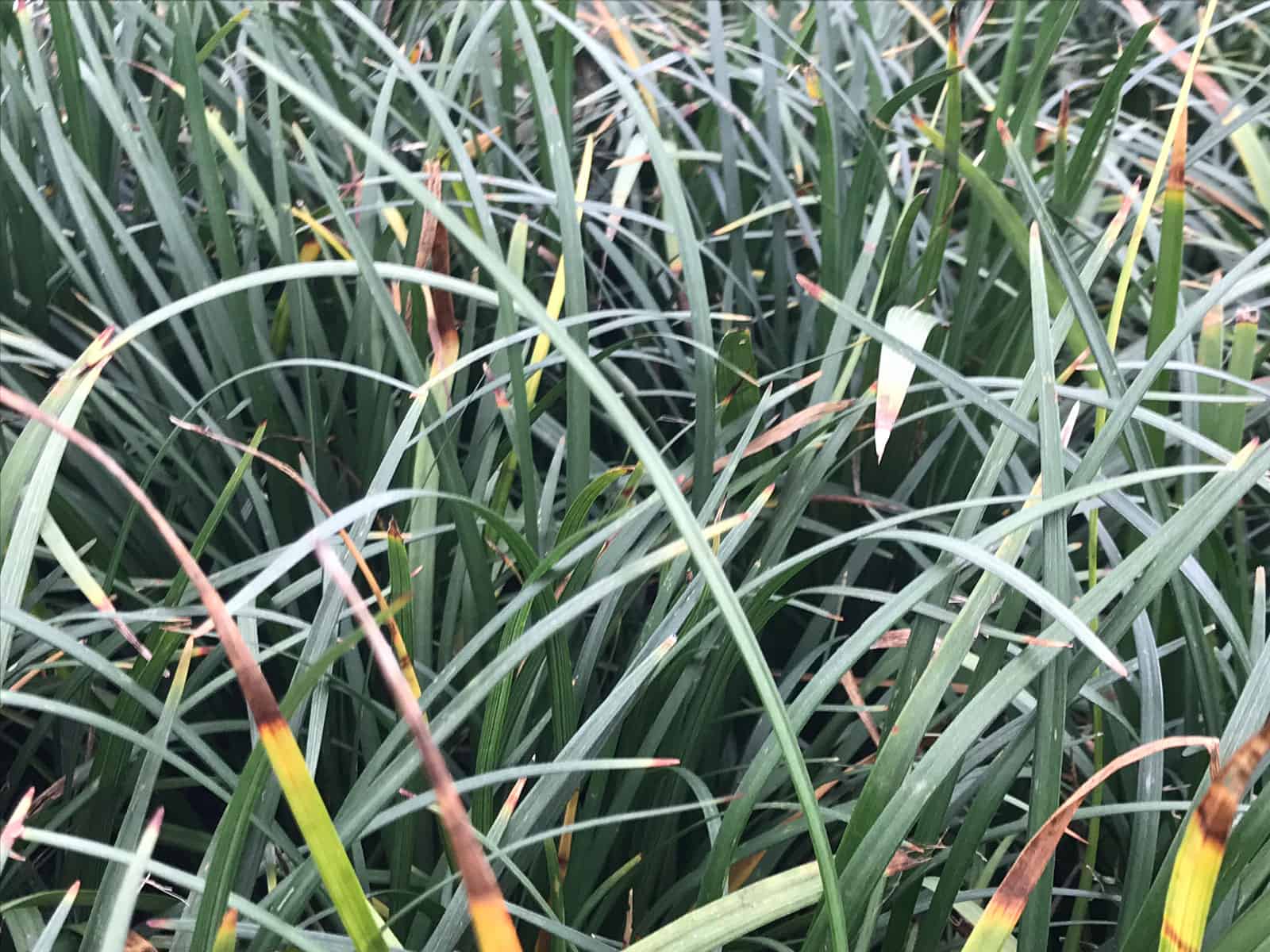
Liriope spicata is a species of low, herbaceous flowering plant from East Asia. Common names include creeping lilyturf, creeping liriope, lilyturf, and monkey grass. This perennial has grass-like evergreen foliage and is commonly used in landscaping in temperate climates as groundcover. Creeping lilyturf has white to lavender flowers which produce single-seeded berries on a spike in the fall. It is one of the most popular groundcovers in the southeastern United States and areas with a similar climate.
Creeping lilyturf is a rhizomatous, grass-like perennial which forms clusters of narrow, arching, glossy, dark green leaves (to 1⁄4 inch (0.64 cm) wide) typically growing 9 to 15 inches (23 to 38 centimetres) high. Erect flower spikes with small, white to pale lavender flowers arise, somewhat hidden, among the leaves in late summer. Blackish berries develop in fall and often persist through winter. Roots have prominent rhizomes and frequent tubers. A cultivar exists with variegated leaves.
Creeping lilyturf looks very similar to another common species in the genus—lilyturf (Liriope muscari). Creeping lilyturf can be distinguished by its rhizomatous root system (in contrast to the diffused root system of lilyturf), its less prominent flower spike being partially within leaves (lilyturf has a longer spike extending well above leaves), and its generally narrower and shorter leaves when compared those of lilyturf.
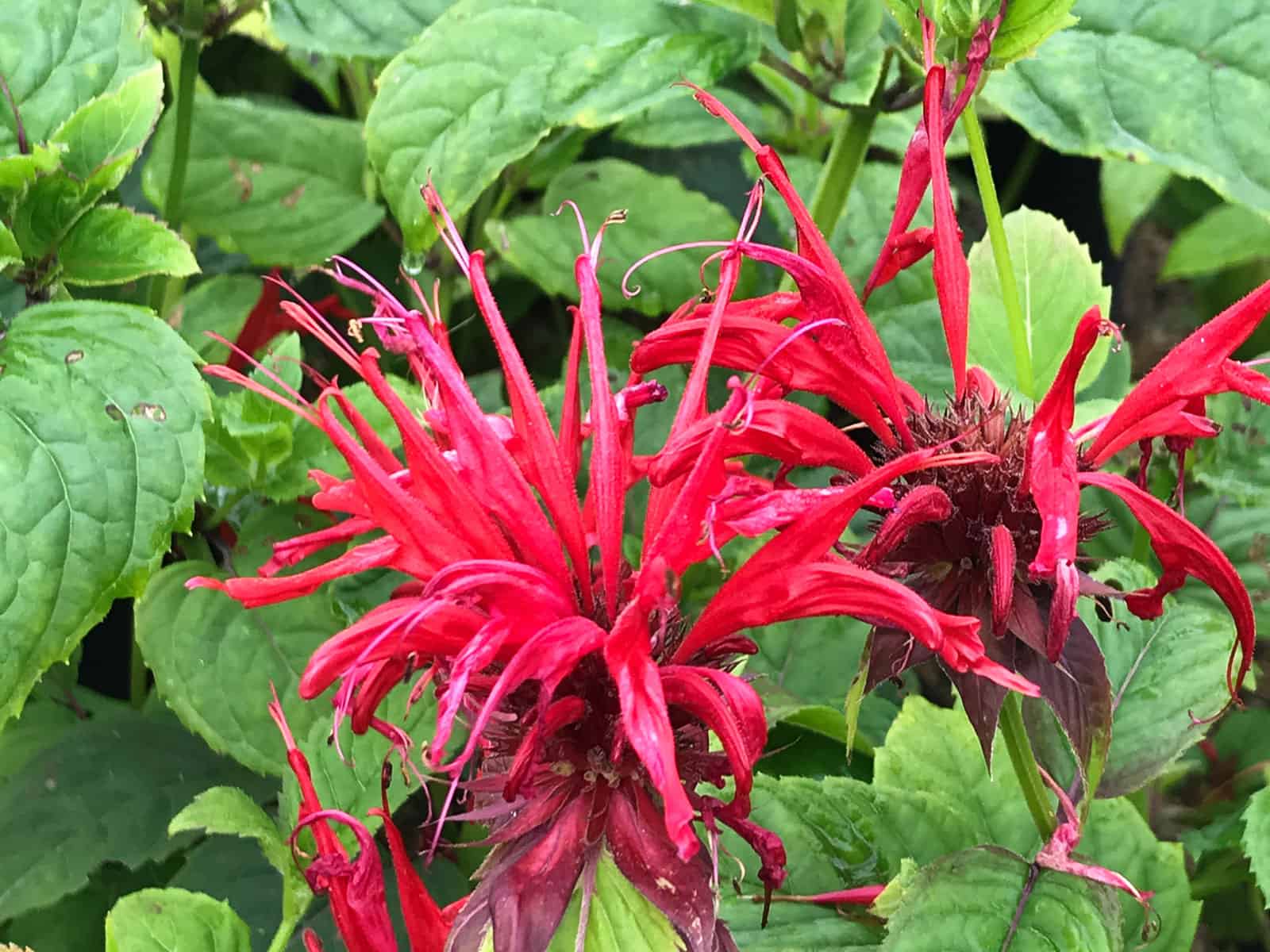
Jacob Cline Beebalm (Monarda Jacob Cline) is one of our most spectacular native Beebalm hybrids with heads of long tubular deep red flowers. Discovered in a Georgia garden, it has excellent mildew resistance and blooms for a month or so in mid-spring.
36-48″ tall x 36″ wide. With its spectacularly large, deep-red flowers, vigorous growth habit and mildew-resistant foliage, ‘Jacob Cline’ is a must for the perennial border. Planted into a compost-enriched soil with regular irrigation, this big boy will form impressive clumps that should be divided every 3rd year to keep it vigorous. Companion plant with Phlox paniculata ‘David’ for long-blooming summer color. (Cutting propagated.)
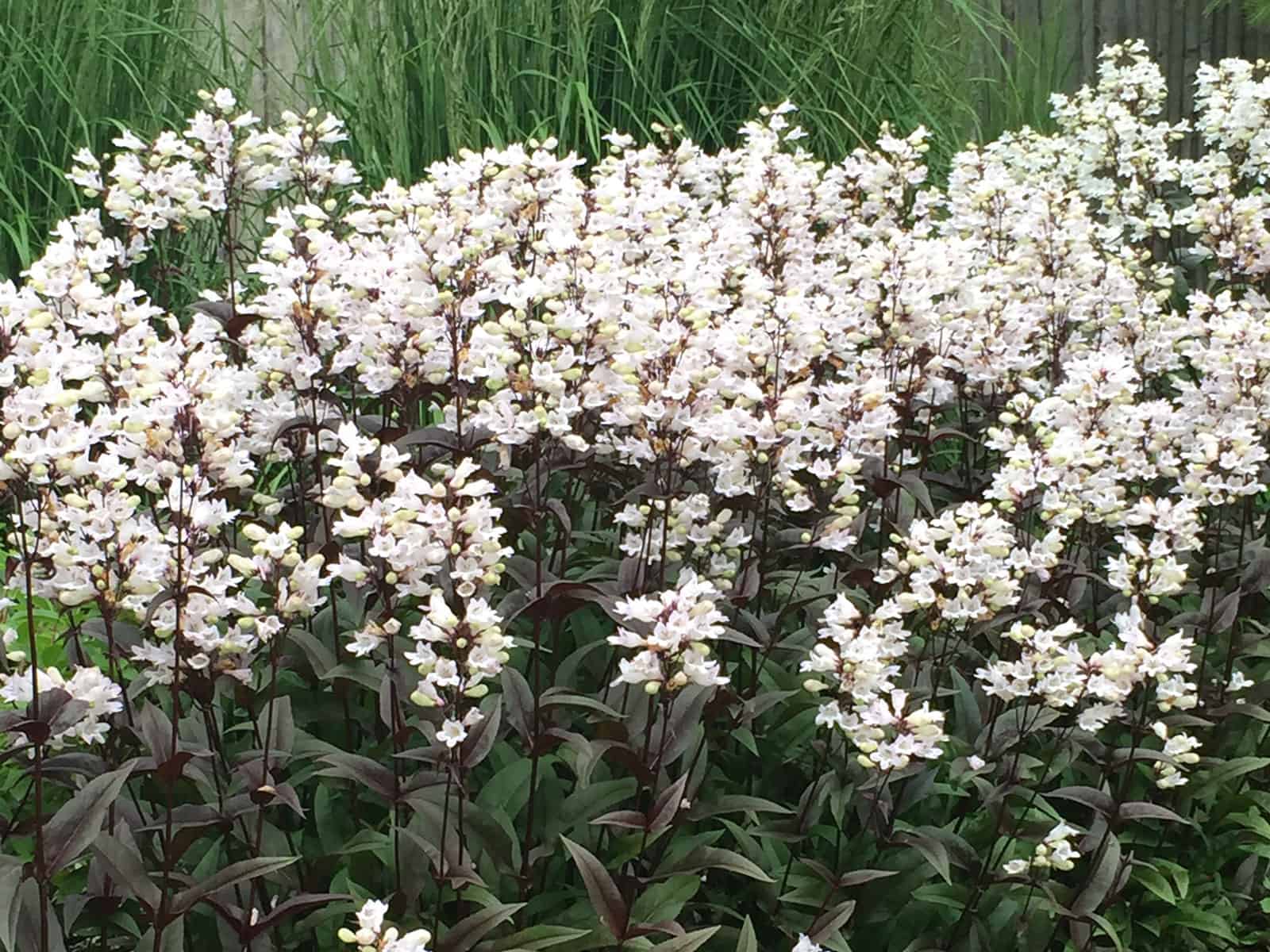
Developed at the University of Nebraska, this is an outstanding taller selection for the middle to back of a sunny border. It forms a mound of deep purple-red foliage, bearing spikes of bicolor soft and deep-pink bell-shaped flowers in summer. An easy border plant, also tolerant of heat and humidity. Terrific as a cut flower. In particularly rich soil this may need to be staked. A 2008 introduction from TerraNova Nurseries in Oregon. USPP#20013: unlicensed propagation prohibited. Registered with COPF.
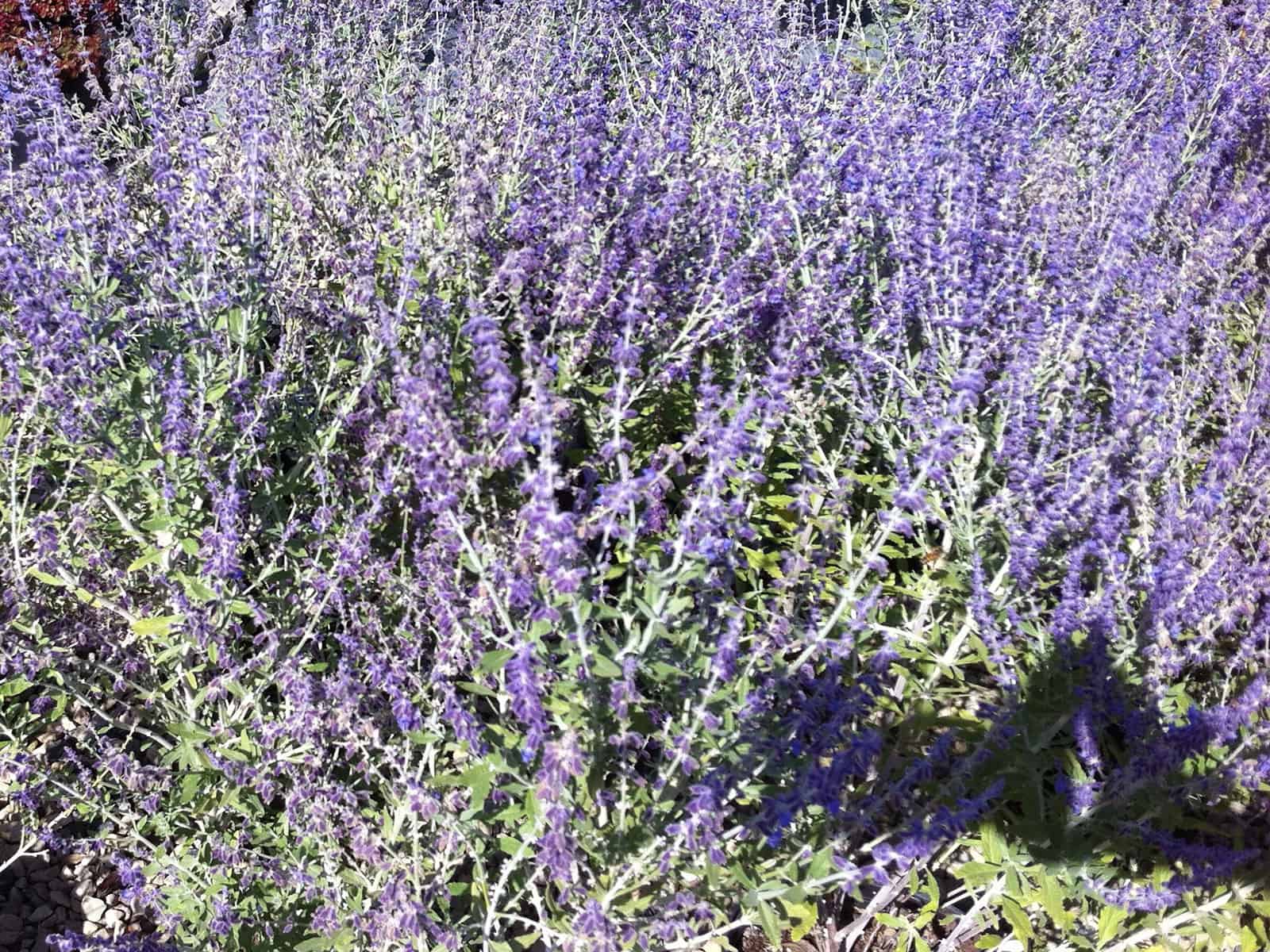
Culture: Easily grown in average, dry to medium, well-drained soils in full sun. Sharp soil drainage is especially important. Avoid wet, poorly drained soils. Plants have good drought tolerance. Best flowering occurs in full sun locations. Stems are more likely to flop if plants are grown in part shade. Cut back plants almost to the ground in late winter to early spring as soon as new growth appears.
Although the taller species sometimes benefits from a spring pinching to control height, this small cultivar performs well without pinching.
Noteworthy Characteristics: Perovskia atriplicifolia, commonly called Russian sage, is a woody-based perennial of the mint family which typically grows 2-4′ (less frequently to 5′) tall and features finely-dissected, aromatic (when crushed), gray-green leaves on stiff, upright, square stems and whorls of two-lipped, tubular, light blue flowers tiered in branched, terminal panicles (12-15″ high). Long summer bloom period. Perennial Plant Association Plant of the Year (1995).
Genus name honors Russian general V. A. Perovski (1794 – c. 1857).
Specific epithet means with leaves resembling salt-bush.
‘Little Spire’ is a compact Russian sage cultivar which typically grows to 2′ tall (species typically grows to 3-4′). It is a woody-based perennial of the mint family. Features finely-dissected, aromatic, gray-green foliage on stiff, upright, square stems. Whorls of 2-lipped, tubular, violet-blue flowers tiered in branched, terminal panicles appear over a long summer bloom. Silvery foliage can provide good winter interest in warm winter climates.
Problems: No serious insect or disease problems. Plants tend to sprawl or flop over as the summer progresses.
Garden Uses: Mass or specimen in borders. Provides long summer bloom for the perennial border. Contrasts well with both pink (e.g., phlox, mallow or roses) and yellow (e.g., rudbeckia) perennials.
Edger along paths. Gray-green foliage and blue flowers provide good texture, color and contrast to many other summer blooming plants.
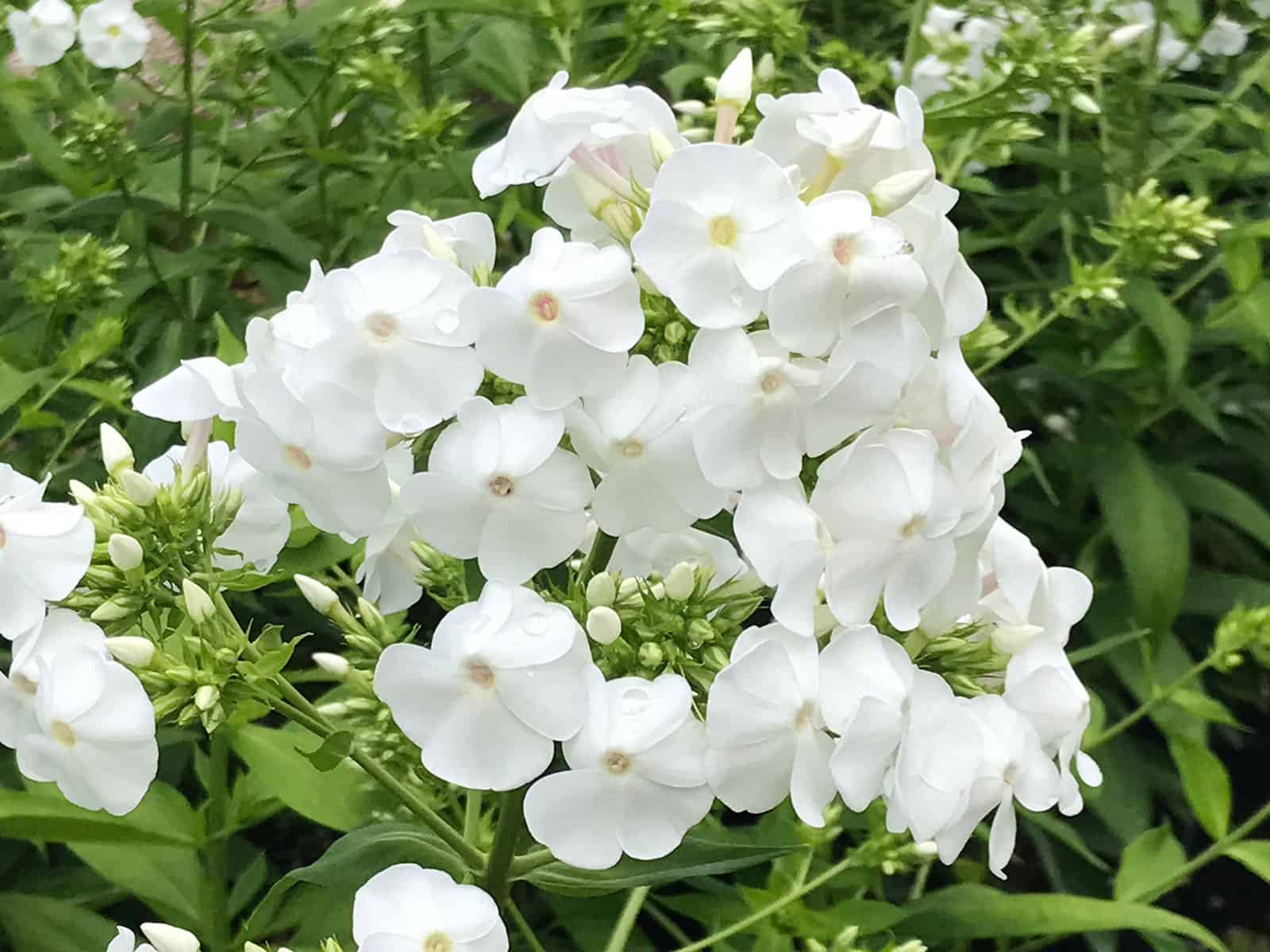
Culture: Grow in moderately fertile, medium moisture, well-drained soil in full sun to part shade. Best in full sun. Prefers rich, moist, organic soils. Also prefers moderate summer temperatures over the heat and humidity of the deep South. Needs good air circulation (space well and thin out stems as needed) to help combat potential powdery mildew problems. Intolerant of drought and needs to be watered in dry spells. Avoid overhead watering however. Appreciates a summer mulch which helps keep the root zone cool. For winter, cut plants to the ground and remove from the garden plus clean up all plant areas in order to minimize possible powdery mildew infection for the following growing season. Remove faded flower panicles to prolong bloom period and to prevent unwanted self-seeding (cultivars generally do not come true from seed).
Noteworthy Characteristics: Phlox paniculata, commonly known as garden phlox, is native from New York to Iowa south to Georgia, Mississippi and Arkansas. It has escaped gardens and naturalized into areas beyond its original native range. In Missouri, it is typically found south of the Missouri River in moist or rich low woods, thickets, alluvial banks and gravel bars along streams and bluff bases (Steyermark). This is an upright perennial that grows in a clump to 2-4′ tall and to 2-3′ wide on stiff stems clad with conspicuously veined, opposite, pointed, elliptic, deep green leaves (to 4-6″ long). Fragrant, tubular, pink-purple to white florets (to 3/4” diameter) are densely packed in large, tiered, domed terminal clusters (to 6-8″) over a long July to September bloom period. Each individual floret has a long corolla tube and five flat petal-like lobes. Butterflies love the flowers.
A large number of garden phlox cultivars in flower colors including white, lavender, pink, rose, red and bi-color are available in commerce. Cultivars resistant to powdery mildew are often the best choices.
The genus name is derived from the Greek word phlox meaning flame in reference to the intense flower colors of some varieties.
Specific epithet refers to the plant bearing flowers in panicles.
‘David’ is a garden phlox cultivar that typically grows in an upright clump to 3-4′ tall. Fragrant, tubular flowers (1/2″ to 1″ diameter) with long corolla tubes and five flat petal-like lobes are pure white. Individual flowers are densely arranged in large, terminal, pyramidal clusters (panicles to 6-12″ long) in summer atop stiff, upright stems which seldom need staking. Long mid to late summer bloom sometimes extends into early fall. Narrow, opposite, pointed, lance-shaped leaves (to 5″ long). Good fresh cut flower.
Problems: Phlox is not always an easy plant to grow well. Phlox bugs, powdery mildew and root rot can be serious problems. Spider mites can also be a problem, particularly in hot, dry conditions. Taller stems may need staking.
By reputation, ‘David’ has good resistance to powdery mildew.
>Garden Uses: Garden phlox is a staple of the perennial border. Mixes well with other perennials and provides long summer bloom. Regardless of flower color, garden phlox is attractive to hummingbirds and is a good selection for inclusion in a bird garden.
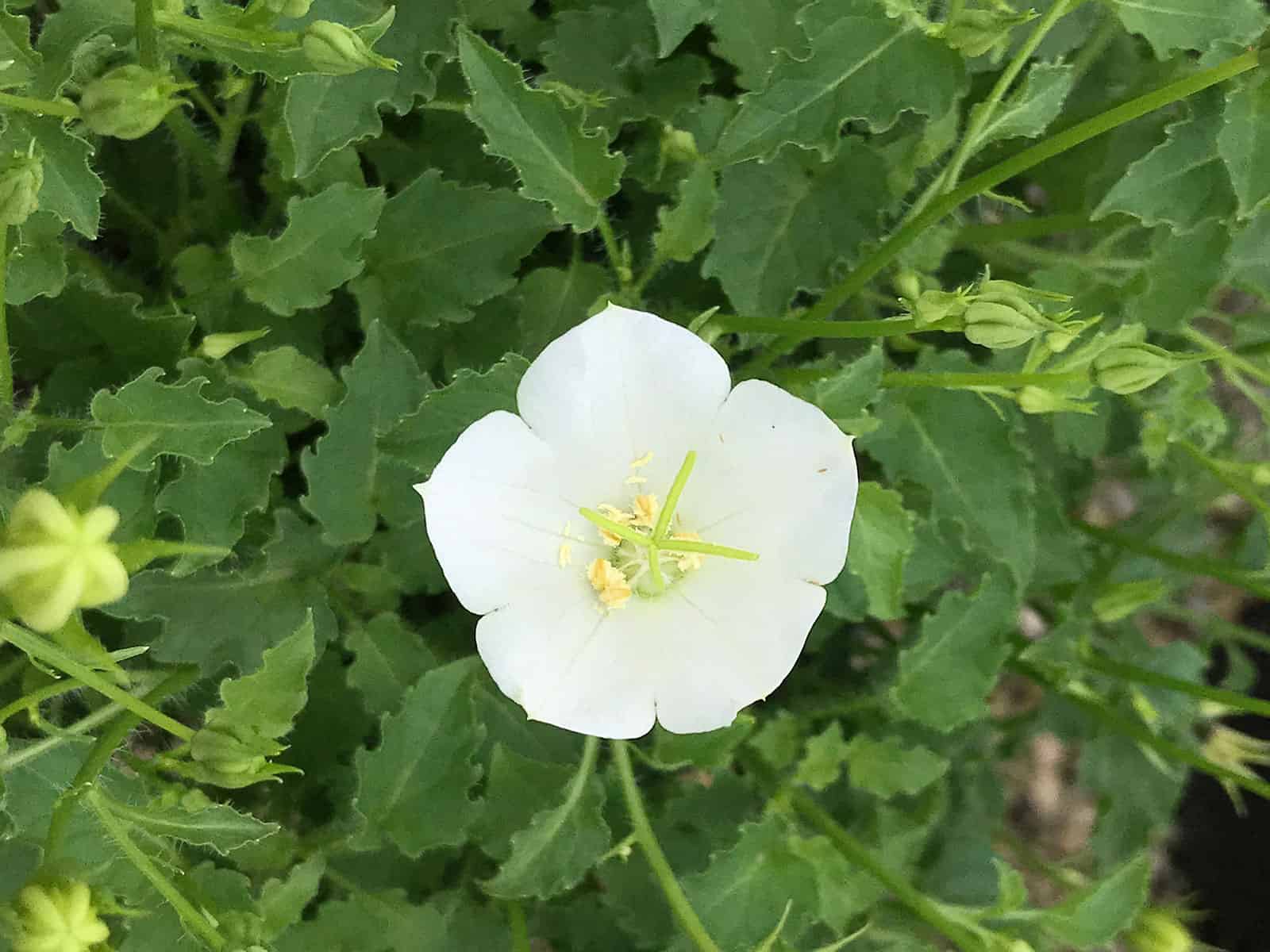
Campanula carpatica, the tussock bellflower or Carpathian harebell, is a species of flowering plant in the family Campanulaceae, native to the Carpathian Mountains of Central Europe. It is a low-growing herbaceous perennial, with long stems bearing solitary blue bell-shaped flowers. It was introduced to the Royal Botanic Garden at Kew in 1774 by Nikolaus Joseph von Jacquin. Several cultivars in shades of white, blue, pink and purple, have been developed for garden use.